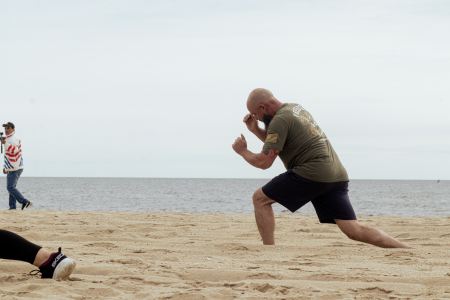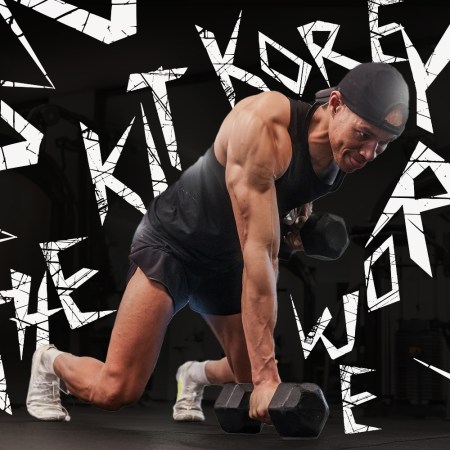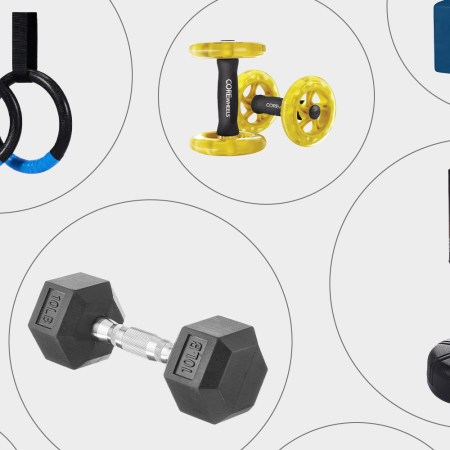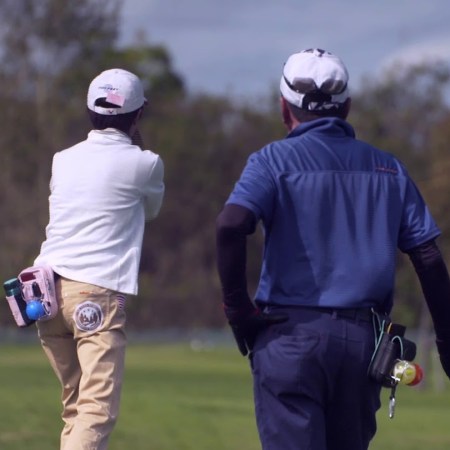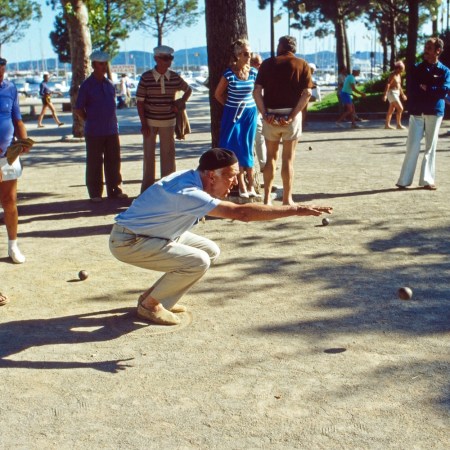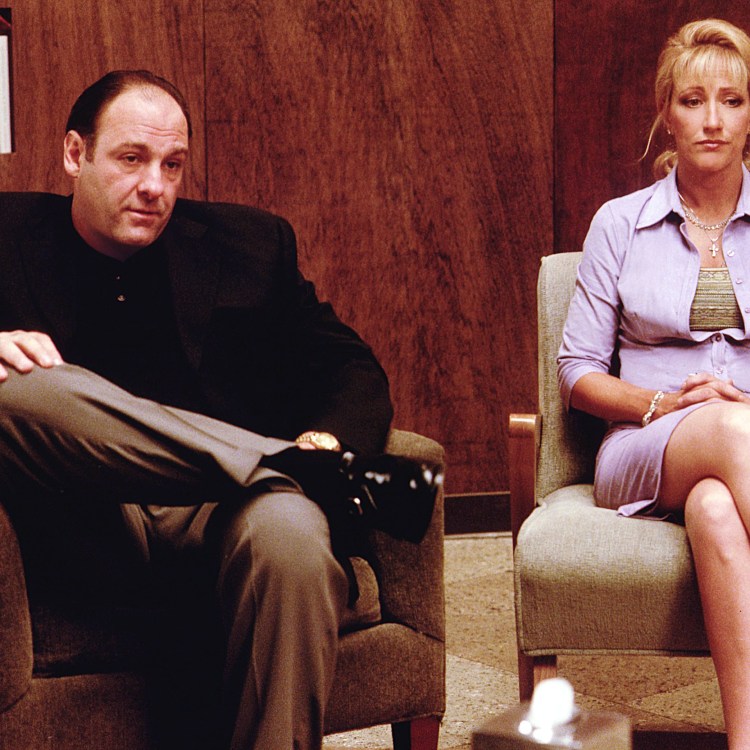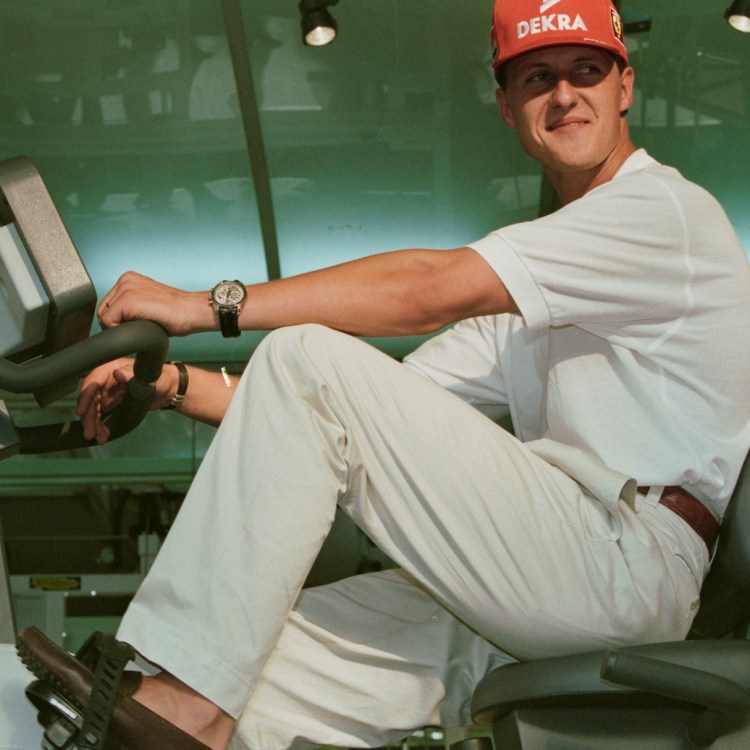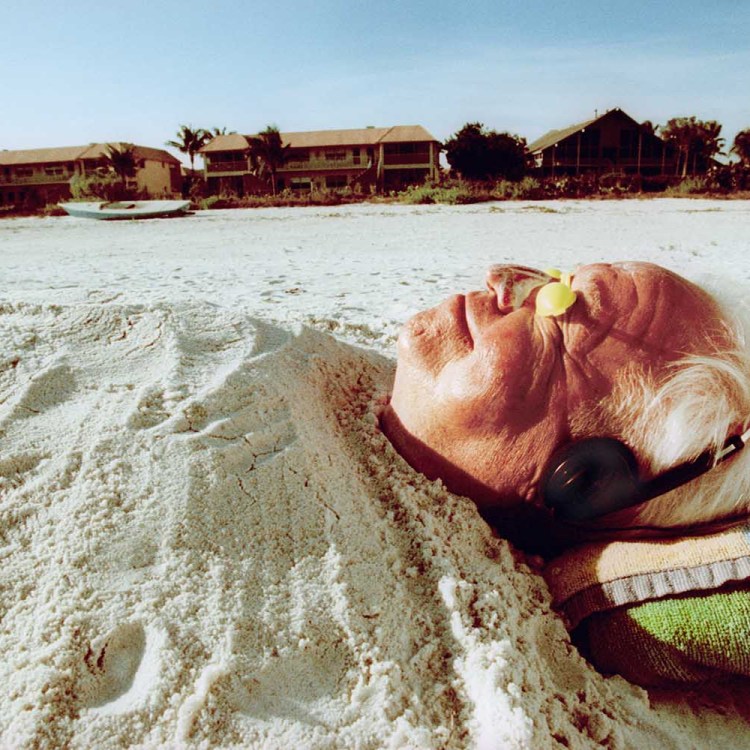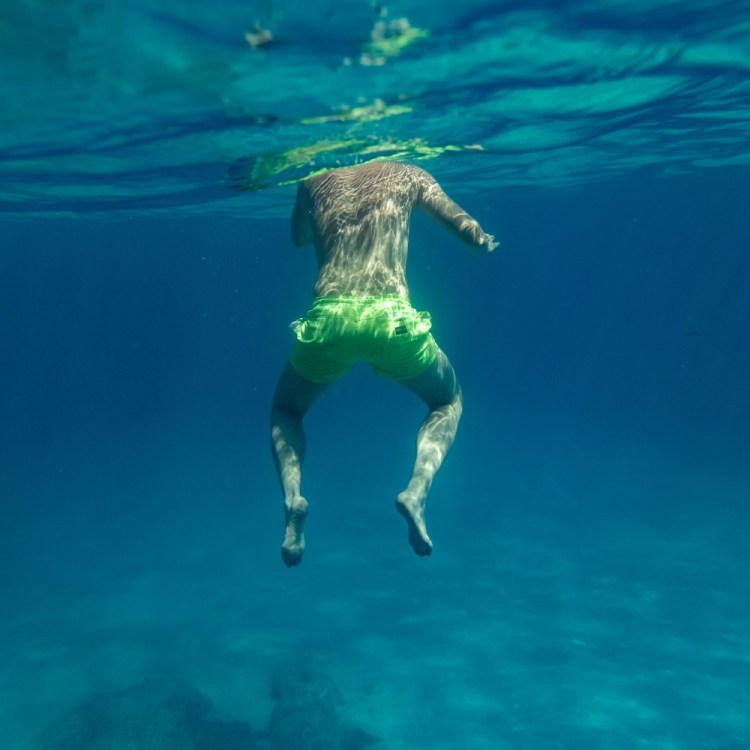As someone who grew up in the early aughts, I have tried my fair share of inane exercise equipment. But nothing was as bad as the Abtronic muscle stimulator I begged my parents to get me for Christmas. (Don’t judge us, it was a different time.) Like many customers, I did not get abs, but the burns from the device kind of resembled a two-pack — if you squinted in poor lighting.
Since then, I’ve been more of a low-tech, analog workout type of person. I prefer pavement to a treadmill, and perform yoga outside instead of in a studio whenever possible. But it took a plank in my backyard to realize that my most underrated gym buddy was staring me in the face all along. One of the most reliable and inexpensive pieces of exercise equipment is, in fact, the good old ground.
What’s So Great About the Ground?
Exercising on the ground — specifically a natural rather than artificial surface — offers “a more holistic challenge, working multiple muscles and systems at once,” certified personal trainer Mike Julom tells me. For instance, doing push-ups on an irregular grassy lawn or sandy beach is much more difficult than on a perfectly flat gym floor.
The key here is unpredictability. “The ground’s natural resistance and unevenness can enhance workouts, making them more functional and dynamic,” he adds.
For those interested in functional fitness, it might be time for you to take your workouts out of the gym and into the open. Workouts based on functional fitness tend to mimic the everyday movements that can get people hurt if they’re not in great shape — like pushing, pulling or lifting heavy things. The goal of these exercises is usually more practical than washboard abs; instead, they’re designed to improve mobility and reduce the risk of injury.
On one hand, the lack of control over the natural landscape can increase the risk of injury when exercising outside, particularly in the short term if you don’t know what to expect. But in the long term, these types of workouts can make your body more injury-resistant by “engaging different muscles and systems that might not get as much attention in a controlled gym setting,” Julom says.
Why You Should Bring Your Workouts to the Beach
We’ve got the perfect 30-minute circuit, courtesy of Chris Hemsworth’s trainerIs “Grounding” Legit?
Beyond being a foundation for functional fitness, the natural ground may have recovery benefits that extend long after a workout. This is where the concept of “grounding” comes into play.
Grounding, or earthing, involves connecting with the earth through your feet. The premise is that human beings tend to sync up with the energy of their natural environment. Devotees claim that when we’re indoors, things like artificial lighting and appliances can unnaturally “charge us up,” which potentially disrupts the body’s electricity. So, in this theory, getting outside and back to the earth helps balance us back out.
Sure, it seems like a woo-woo, new-age idea, but grounding has gained more legitimacy in recent years. A number of peer-reviewed studies suggest that grounding can help reduce muscle damage and decrease the concentration of blood urea during exercise. Meanwhile, there is some evidence that it can reduce pain and muscle soreness after an intense workout, and research suggesting that it can improve sleep quality, giving your body more time to recover. Grounding has also been found to improve heart rate variability, which is essentially the amount of time your heart rate slightly fluctuates between beats. This is used to gauge a person’s overall fitness and how well they cope with stress, indicating the grounding could make us more adaptable.
Julom is a believer. “I’ve tried this myself, especially after a heavy workout, by walking barefoot on grass or sand,” he says. “It literally feels like hitting a reset button, calming the mind and easing tension in the body.”
Technically, you have to be barefoot to experience the full effects of grounding. But the good news is you may be able to harness many of these benefits by simply utilizing the ground outside during exercise, no dirty feet required. That is why Julom suspects that “working out outdoors, where grounding naturally happens, could offer an edge over training inside a gym.” Just try to bring your practice somewhere safe and spacious, like the field inside your local track.
It’s Good to Get Outside
Maybe the benefits aren’t necessarily coming from the the earth’s electrons, but from the variety of perks accompanying an outdoors, ground-based workout.
For instance: Vitamin D supplementation has been linked with increased muscle strength, and sunlight is the best source around for that. (One reason why getting outside is your best defense against seasonal affective disorder.) Research also shows that being outside in nature increases mindfulness, while other data indicates that physical exercise is the most beneficial for mental health when combined with mindfulness.
That said, Julom does not think of grounding itself as a “magic bullet,” nor does he think of the natural ground as an adequate replacement for exercise machines and equipment — especially if your fitness goals are more specific and call for precise movements in a controlled setting. But at the same time, he recognizes that utilizing the natural ground in workouts “could be an effective way to enhance overall well-being and recovery.”
I suppose qualifying the grass in your yard or the cliffs on a hike as workout “equipment” is a tough sell (partially because you can’t sell it). But personally, I like it. So long as I can deal with the wind adding some natural resistance to my run, avoid rolling my ankle on a root, and bundle up against the cold, I can always take my fitness goals outside. And even if my shoes go missing, I apparently don’t have an excuse to skip my workout.
The Charge will help you move better, think clearer and stay in the game longer. Subscribe to our wellness newsletter today.


